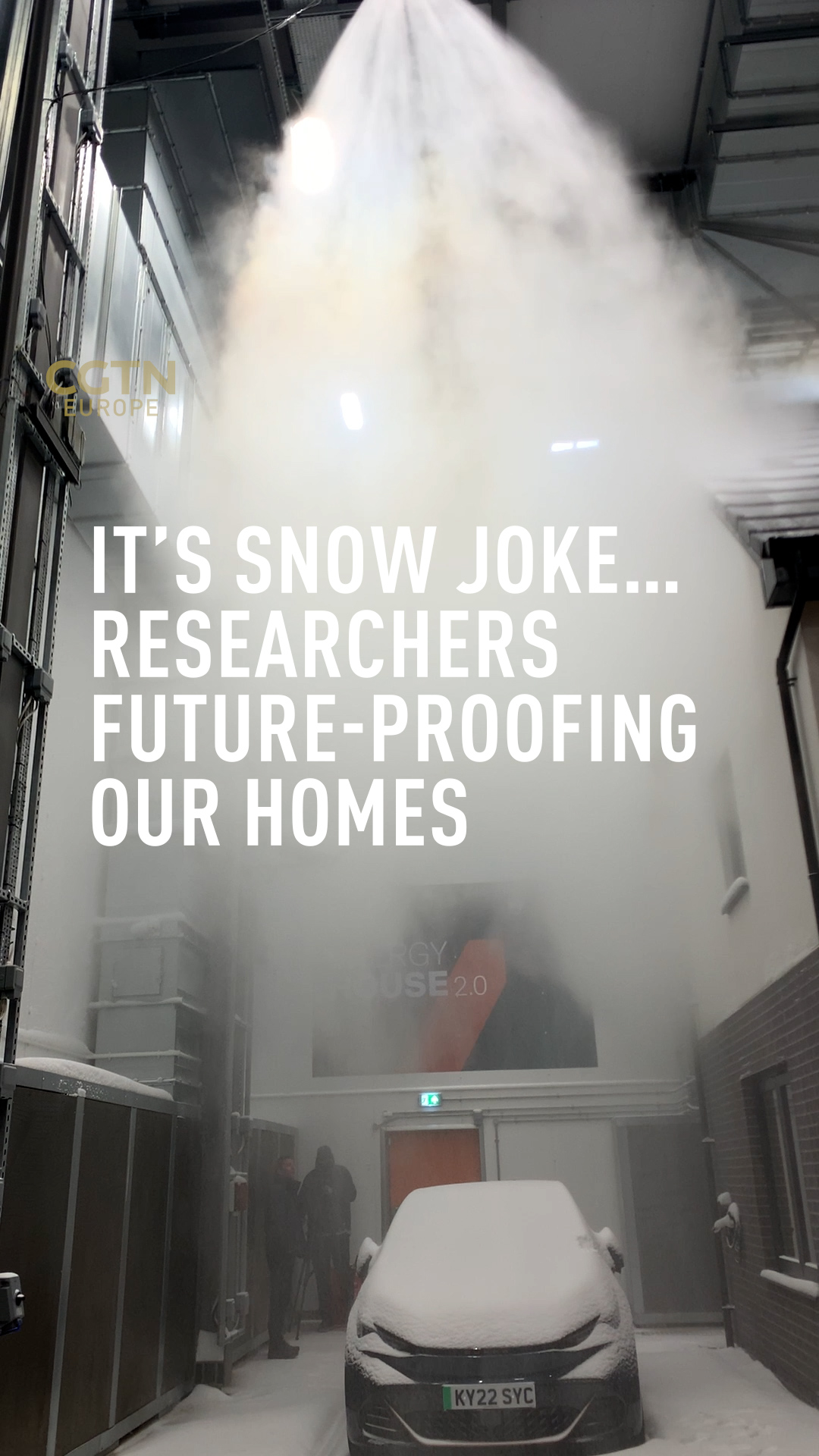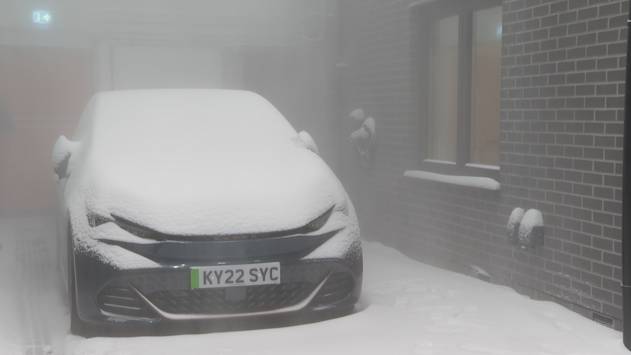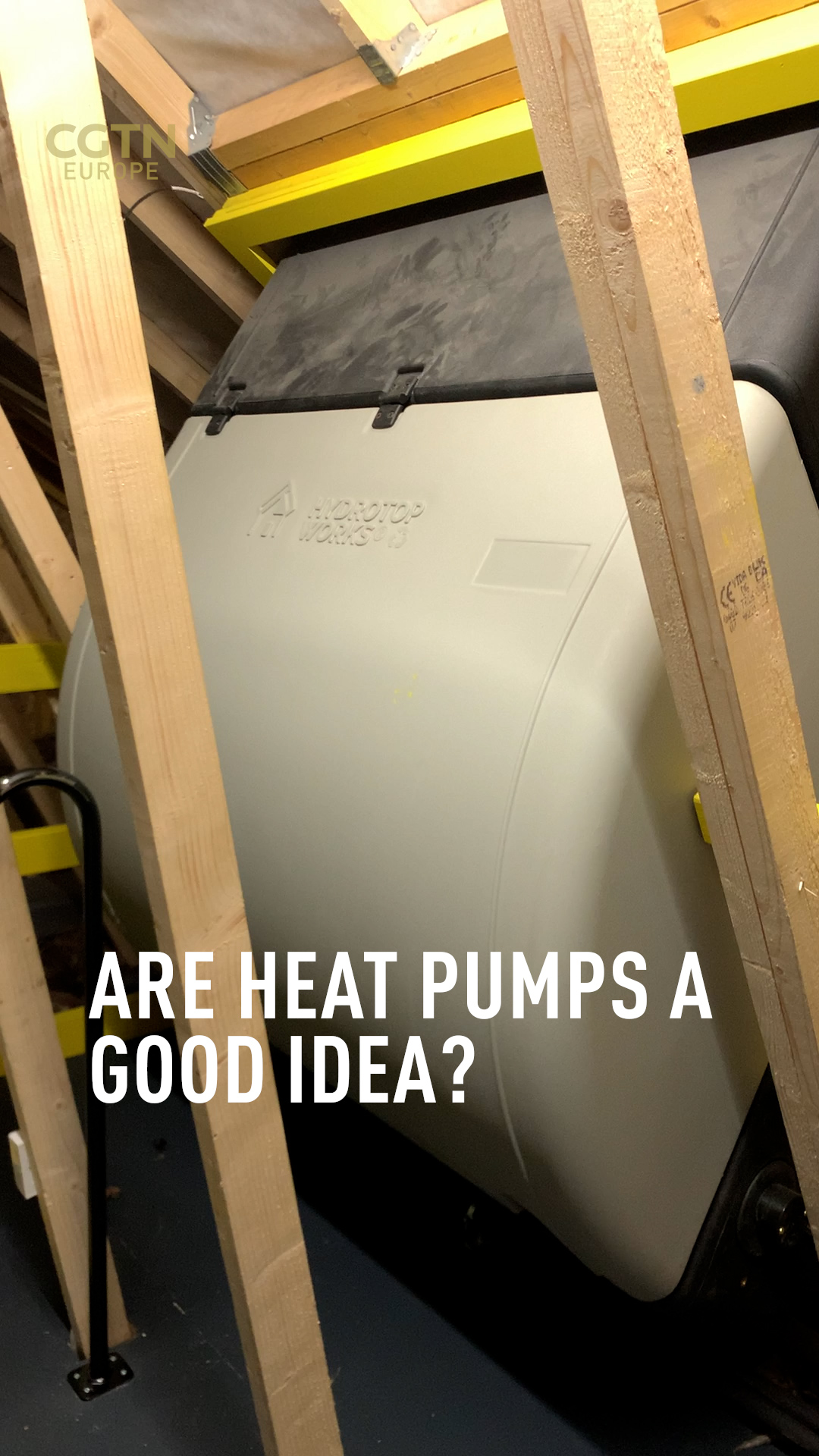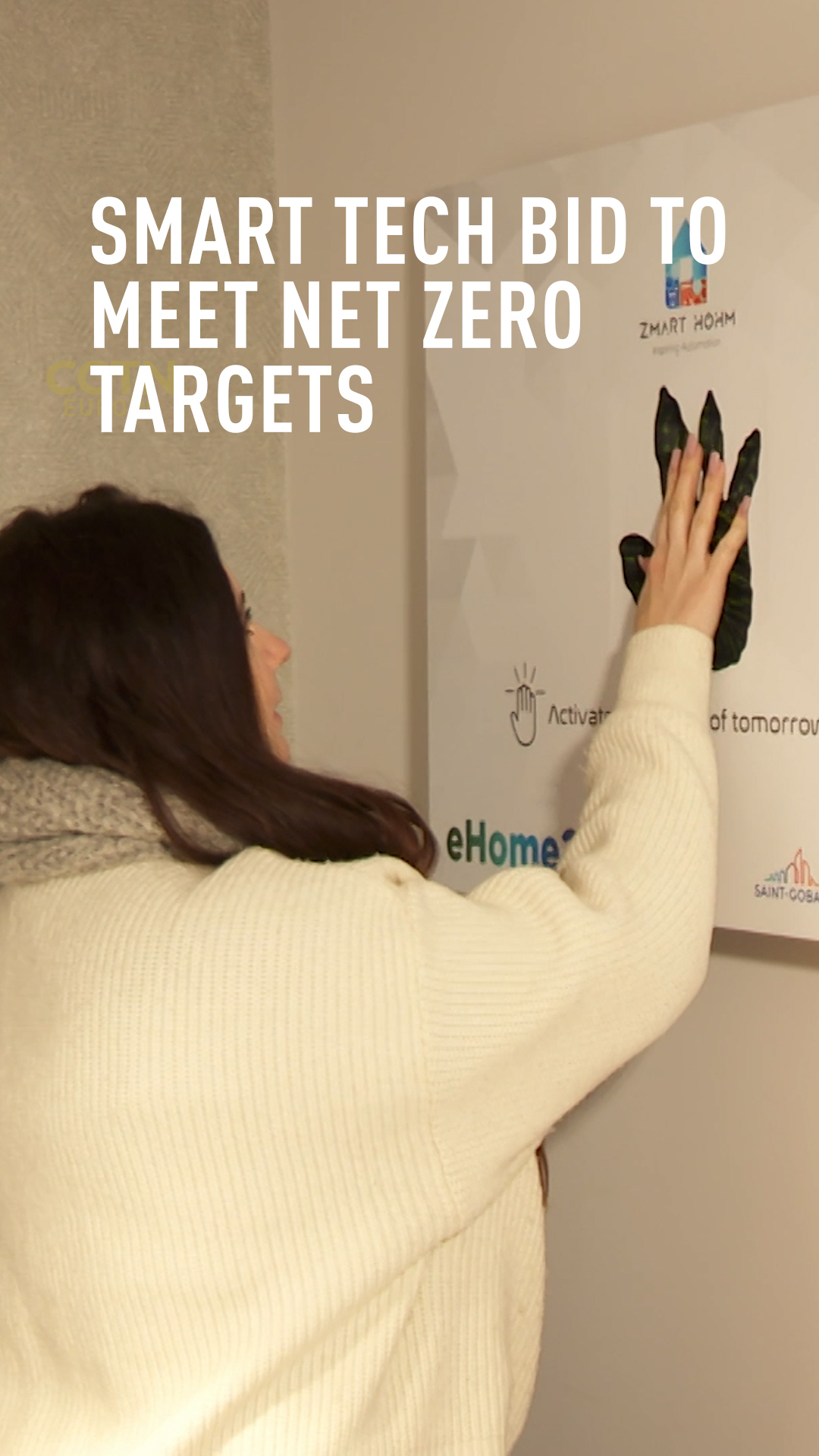01:02

It's snowing heavily at Energy House 2.0 in the northern English city of Salford.
Ten centimeters of snow has settled onto a parked car, the roof of two homes, and the pavement. But there's no snow anywhere outside for more than 100 miles.
That's because Energy House 2.0 is the world's first all-weather research facility, positioned on the grounds of the University of Salford, and the snow is being pumped out of a machine hoisted by crane 12 meters above the ground.
READ MORE
EU's Green Deal seeks level playing field
Hungarian architect's green designs target energy independence
Greece's green landmark en route to renewable energy
On the site the next generation of energy efficient and environmentally-friendly building technology is being tested in a variety of weather conditions, with temperatures ranging from -20 to +40 degrees Celsius, along with simulated wind, rain and solar radiation.
Within the structure are two environmental chambers accommodating two detached houses built to different specific specifications and containing various cutting-edge technologies.
The two homes were built by Barratt Developments and Bellway Homes, two UK housebuilding giants. French multinational Saint-Gobain, which designs much of the technology involved, is the third of the four interested parties, along with the university itself.
The foursome hopes the unique facility will help accelerate global progress towards low carbon and net-zero housing design. The house opened in January, 11 years after the original Energy House Laboratory was inaugurated.
Richard Fitton, Professor of Building Performance at the University of Salford, told CGTN Europe: "When we usually study the performance of buildings we do it out in the field. That might take three or four years to come up with a perfect study. Here we can look at doing that in between six and nine months."
With the built environment accounting for 40 percent of the UK's carbon footprint, and a similar proportion elsewhere in Europe, a step change in the design of new buildings is required for countries to cut their emissions.

Temperatures inside Energy House 2.0 go as low as minus 20 degrees Celsius. /CGTN
Temperatures inside Energy House 2.0 go as low as minus 20 degrees Celsius. /CGTN
This will require an exhaustive upgrade and retrofit programme to existing housing stock. The UK Green Building Council estimates that 80 percent of the country's 2050 building stock has already been built, much of it terribly inefficient in terms of insulation, energy and sustainability.
Retrofitting hi-tech solutions is key to changing that. According to Fitton: "We can look at climate change predictions, so a building built in 2023, how well is that going to perform in 2030, 2050, 2080 – is it going to start to overheat, are we going to need to look at cooling?"
Smart tech promises to help make homes more efficient, allowing future homes to effectively manage themselves. In the Barratt concept house, window blinds automatically heat and cool rooms in response to temperature changes, saving energy and promising to cut household bills dramatically.
Tom Cox, Saint-Gobain's UK technical and development director told CGTN: "(We are) starting to understand how you can optimize locally generated electricity, utilize low tariff electricity, store the energy (produced in the house) in our car battery or house battery and use that instead of using high tariff energy."
01:17

The Bellway house is making use of roof-mounted heat pumps and infrared heating panels.
"We've utilized the space available in the loft with the UK's first roof-mounted air-source heat pump, which takes up less space," explained Paul Lawler, Group Head of Communications for Bellway Homes.
Heat pumps are electrically-powered devices which absorb heat from the air, ground or water around a building. Uptake is growing in mainland Europe, but growth of the technology in the UK has been sluggish, largely due to the system's initial expense.
Some energy experts question how sustainable heat pumps are, and how much they can cut bills.
"It is more expensive but it is more efficient," insisted Lawler, "The theory is that heat pumps are three times more efficient, so for every unit of energy that you put in you get three out."
The house's infrared panels use radiant heating, which differs from conduction and convection by transferring heat to objects and people directly, rather than heating the air.
01:25

Among other technologies on display are heated skirting boards and showers that recycle waste water into energy to heat the home.
Revolutionary house exteriors are also being tested. Many European homes are made of brick or stone, environmentally costly in production terms and sometimes inefficient in older homes by allowing heat to escape through air and moisture.
Saint-Gobain has devised a 'brick slip' which looks like a traditional brick finish but instead consists of a thin brick veneer padded out with layers of insulation.
The homebuilder says the slip is akin to the house wearing a warm jacket – and because the material can be produced in a factory it can be quickly installed.
According to Saint-Gobain's Cox: "The panel in front is a closed panel timber frame insulated in the factory, which comes together onsite as a jigsaw puzzle.
"If we were to build this panel in traditional brick and block, we'd be looking at a half-a-meter thick wall. The brick slip is only five millimeters thick. So we take 100ml of the masonry off the outside and use that 100ml to better insulate."
Testing of the initial technologies in place at the two homes will continue for the rest of the year and extensive analysis will help inform policymakers and companies which technologies should be extended.
Companies with other suitable technologies will be offered access to the second chamber of Energy House 2.0 for testing and research.
Subscribe to Storyboard: A weekly newsletter bringing you the best of CGTN every Friday